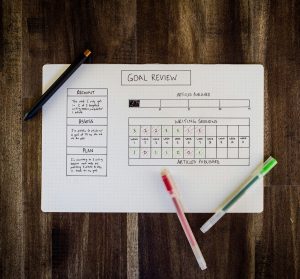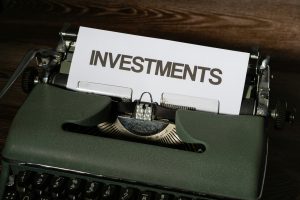Financial Planning for DIY Investors
Practical Steps to Take Control of Your Financial Future and Build a Solid Plan Without Relying on High-Cost Advisors
Starting a financial plan on your own can feel overwhelming. But with the right approach, anyone can take control of their financial future.
DIY investors, especially those who want to maximize their wealth without relying on costly advisor fees, can benefit from developing a personalized financial strategy.
Whether you’re just beginning or refining an existing plan, here are 5 key tips to get you on the right track:
1. Define Your Financial Goals
The first step in any financial plan is goal setting. Without a clear sense of direction, it’s impossible to know where you’re headed. Start by asking yourself:
- What do I want to achieve in the short term (1–3 years)?
- What are my medium-term goals (3–5 years)?
- What do I want my financial life to look like in the long term (10+ years)?

These goals can include things like buying a home, paying off debt, building an emergency fund, or saving for retirement. The key is to be specific about your goals and quantify them wherever possible.
For example, instead of simply saying “I want to retire comfortably,” define what that means in terms of the amount of money you need to retire at your desired age. Is it $1 million by age 60? $2 million by age 65? Having a clear target makes it much easier to create a plan that gets you there.
To learn more about financial goal setting and how to align your goals with your investment strategy, check out my post on Goal Setting.
2. Create a Budget and Track Your Cash Flow
You can’t build a successful financial plan without first understanding where your money is going. A well-organized budget is the foundation of any good financial plan. Tracking your spending, income, and saving habits will help you identify opportunities to save more and invest wisely.
Start by breaking down your income and expenses into categories. Some categories to consider are:
- Housing (mortgage or rent)
- Transportation (car payments, insurance, public transit)
- Food and groceries
- Insurance (health, auto, home)
- Debt payments (credit cards, student loans)
- Savings and investments

Once you understand your cash flow, you can determine how much you have available for investing. If you’re living paycheck to paycheck, you may need to adjust your budget to prioritize savings and investments.
Need help with budgeting? My Budgets Don’t Work post provides free resources to help you get started.
3. Build an Emergency Fund
Life is full of unexpected surprises—medical bills, car repairs, or sudden job loss. That’s why it’s crucial to have an emergency fund in place before diving into any investments.
Aim to save at least 3–6 months of living expenses in a high-interest savings account (HISA) or a money market account where your money is safe, but accessible. Having this safety net will prevent you from having to dip into your investments when emergencies arise.
Once your emergency fund is set, you’ll have the peace of mind to invest more aggressively, knowing that you won’t be forced to sell investments prematurely if life throws you a curveball.
4. Understand the Basics of Investing
Before you begin investing, it’s important to understand the basics of how investments work. While you don’t need to become an expert overnight, having a grasp of key concepts will help you make informed decisions. Focus on understanding the following:
- Risk vs. Return: Investments with higher returns typically come with higher risk. Understand your personal risk tolerance to balance your portfolio appropriately.
- Asset Allocation: This refers to how you divide your investments across various asset classes (stocks, bonds, real estate, etc.). A diversified portfolio reduces risk while increasing the potential for long-term gains.
- Compound Interest: The power of compound interest is one of the most important factors in building wealth. The earlier you start investing, the more you can benefit from this powerful tool.
One of the most important things to remember as a DIY investor is to invest for the long term. The market will experience ups and downs, but over time, a diversified investment strategy can help you reach your financial goals.
If you’re looking for guidance on how to get started with investing, take a look at my post on an the importance of an Investment Policy Statement.

5. Stay Disciplined and Review Your Plan Regularly
Creating a financial plan is just the beginning. The key to success is discipline. Stick to your plan, even when the market gets volatile or when you face temptation to make impulsive decisions. Remember that your plan is designed to help you reach your goals over time, so short-term market fluctuations shouldn’t derail you.
Also, regularly review and adjust your financial plan. Your goals and circumstances may change over time, and your financial plan should reflect that. Set aside time once or twice a year to review your budget, savings goals, and investment strategy. This will ensure you’re on track and allow you to make any necessary adjustments.
Ready to take the next step in your financial journey? Schedule a consultation with us to review your financial plan and ensure it’s aligned with your goals. Book a free consultation.
Conclusion
Starting a financial plan as a DIY investor doesn’t need to be complicated or overwhelming.
By defining clear goals, budgeting, building an emergency fund, understanding the basics of investing, and staying disciplined, you can build a solid financial foundation for your future.
Remember, the most important step is starting now. The sooner you take control of your finances, the sooner you can stop pay high investment fees and build the wealth and security you desire.
If you need help getting started or reviewing your plan, I’m here to guide you. Let’s work together to ensure your financial future is on the right track.
David Martin is an Advice-Only Financial Planner in Halifax NS, serving Atlantic Canada DIY investors and business owners.
I help DIY investors in Atlantic Canada gain financial confidence. Contact me today to schedule a free consultation and start your journey towards financial independence.
Connect with David on LinkedIn.
Disclaimer: Our content is intended to be used for informational purposes only. It is very important to do your own analysis before making any investment and tax-related decisions. You should seek independent financial advice from a financial advisor near you.
